Comparing Messier’s globs
Sketching globular clusters is fun (really!). It’s impossible to draw every single star in the correct position, but still a lot of details can be collected like shape, size, condensation, distribution of the stars, star chains, brightness, color (GC’s appear blue in most cases), darker spots or areas within the cluster etc. In the end it’s always the goal to show the identity of each object and with globs that can be hard because at first glance they appear so much alike. In this section I’ll try to show the individual characteristics of all the Messier globular clusters as realistically as possible, often by comparing them directly to each other.
During my trip to La Palma in June 2018 I finally had a chance to observe the three Messier globular clusters at the bottom of the “teapot” for a bit longer period. On photographs they are quite alike in size and structure, but through the eyepiece it was easy to see their differences. I thought it would be fun to do a comparison sketch so that these differences can be seen at a glance. The observations were done with the 10″ newton at 240x from the top of the Roque de los Muchachos.
M69 – has a bright and triangular core, a bit more stretched to the N-E. It appears grainy, but can’t be resolved. The outer region is short and a bit more grainy than the core, but still can’t be resolved. On the S-E boundary I see a bit of a dark lane.
M70 – has a very small core in the shape of a reversed heart and can’t be resolved. the large halo can be resolved a bit better than that of M69 with averted vision, but I don’t see any individual stars, just a grainy glow.
M54 – is the largest of the three (just) and looks like an elliptical galaxy on first impression. The 1/3 brighter core gradually flows into the halo and only with effort I can see some graininess in here. The halo too flows very gradually into the sky background.
A month later and back at home in The Netherlands I decided to do another comparison of 3 globs near each other. This time it was the turn for Ophiuchus where no less than 6 Messier globs reside. The three of them with the highest declination are still nicely visible from my northern latitude. They are all very different and striking in their own way. The observations were done with the 16″ Alkaid at 181x from Breezanddijk and Knardijk.
M12 – The smallest one, but with a large and rich halo. Easiest to resolve. Has a diamond shaped core with a somewhat darker region N-E of it. Star chains are numerous and most prominent on the W-side. The cluster is “underlined” by three bright stars and is surrounded by a bit dimmer stars in the shape of a “V”. This one is my personal favorite of the three.
M10 – Beautiful. Perhaps a bit harder to resolve. Also here many starchains can be seen flowing away from the core. There is a notable line of brighter stars crossing the cluster in N-S direction and a few dark dustlanes crawling like worms in front of the core. The shape makes me think of an arrow being shot upwards.
M14 – The most condensed one and it’s even a bit hard to see the graininess. Almost perfectly round, just slightly more confined and “pointy” on the E-side. The brightness fades away softly from the not too bright core to the outer region. The halo is short. Only a few stars can be seen blinking up in and around the core now and then, of which one exactly in the center. One starchain meanders towards the SW. Must be a showpiece from a more southern and darker location, but here it remains a bit too dim for my taste.
In 2023 on a trip to La Palma I decided to sketch three globular clusters that are close to each other with the same eyepiece (7mm) so that a good comparison could be made. Those are M9, M19 and M62. And because I still needed to decide where to put M107, I thought it would be nice to add it to this comparison too, more so because it was sketched with the 7mm as well. However, it’s clear that M107 was sketched from a more northern location with more light pollution and where the object is lower in the sky; the sky background was much lighter and less stars could be counted in the surrounding field.
M9 is bright and still quite large. The brightness gradually becomes less toward the edges and the core is not much brighter. There’s some kind of “central star” in the heart of the core with a small line of dim stars running down from it (very subtle). The shape of the cluster reminds me a bit of the shape of the island La Palma and on the top and right side a dark indentation can be seen. A few stars can be resolved along the outer rim, but it’s mostly graininess that can be observed. Star chains are not evident, only two dim and circulaar strings of stars on the left and underside.
The first impression of M19 is kind of bizar. Centrally, a fuzzy ball with grain can be seen, but with AV the cluster is VERY much oval shaped and appears to be torn apart. No real individual stars are resolved, the view remains just grainy and with that it seems that this cluster is quite condensed. The brightness gradually dims away from the core. The right side appears somewhat flatter and at the underside two bright stars can’t be missed and appear to “sustain” the cluster. At the top side two star chains are seen with a dark zone running through it. Some more dark pockets are located just below the lower chain.
M62 is larger than the previous two and also easier to resolve. The core is clearly defined with its bright nucleus and far away from it some dimmer members of the cluster can still be noted, especially at the underside. One star chain is clearly set apart from the cluster; this one springs at the top and flows down on the right side like a spiral arm with a dark wedge in between. At the underside some dim and horizontal strings of stars can be seen.
M107 does not really culimate at a high enough altitude to resolve it properly and is not easy to keep it out of the surrounding light pollution. First impression is a dim stain amidst an asterism that resembles Cygnus (where M107 is Sadr…) With prolonged observations, the grainy texture becomes visible, but the core does not really pop. Of all Messiers, this is the smallest of globulars with the highest surface brightness, but because the cluster is very loose it appears larger (especially with AV). Left and under in the sketch is where the brightest area is seen and two or three stars can be resolved. At the right side a dim “spout” is formed at the end of which a brighter star is seen. A darker zone cuts through the cluster from up and left towards the center and bends down from there a bit less obvious.
In 2017 I was in the French Pyrenees and had the chance to do some observing during the family holiday, although the weather didn’t really prove favorable. On one night however I was able to take my 16″ Alkaid up the “Port de Balès”, a mountain passage at a height of 1800 mtrs and a very beautiful and very dark location. I haven’t sketched a lot during my four short sessions, but couldn’t resist the urge to put these two globular clusters on paper which I viewed one after another. How different can two GC’s really get?!
M55 is a (Shapley) class XI cluster and with that it’s very loose and almost resembles a dense open cluster. It was dim, perhaps because of the (still) low declination and the brightness of the stars was quite uniform. About 7 or 8 stars were a bit brighter than the rest and the shape of the cluster reminded me of a pentagram. It is large and could almost compete with the nearby M22 in size. I was surprised to find it so striking this time compared to other occasions when I had seen it.
M75 on the other hand is VERY dense. Being a class I object I had a lot of difficulty to even see that it was a globular cluster as no stars could be resolved… The small core shines like a bright pearl, surrounded by a weak halo where only the suggestion of graininess could be suspected.
M55 and M75 are placed in the sky in such a way that you can see them right after each other, so have a look for yourself and see if you are as astounded the way I was to see that two GC’s can be so different in appearance. M55 was sketched @129x and M75 was sketched @259x.
Aquarius houses two Messier globular clusters, which differ quite a lot from each other. Both were sketched with the 16″ in two different locations in France under a similar (SQM 21.4) sky within the time frame of about a month. They were sketched with a 7mm eyepiece at 259x.
M2 is large, dense, bright and some details could be observed. On the north side (down in the sketch) two short star chains are visible and a dimmer third one on the left side and set loose from the core area. A dark “wedge” was seen on the right side which appears to have sliced a part out of the cluster on that side. More to the south a dimmer, round pocket of dust was observed. On the SW side some more grainy stardust could be picked up, more than in other areas on the face of the glob.
M72 on the other hand is quite small and not very bright. It resides in a richer star field and due to the Shapley class IX about ten stars could be resolved well into the heart of the cluster. The triangular shape of the glob is obvious and hard to miss. On the right side a separated segment of stars was observed.
The following set is yet another example of two globular clusters which are very different. Both reside in the beautiful constellation of Scorpius.
M4 is large and loose and the not-too-bright core is showing a background glow in the shape of a mushroom (at least, this is how it appeared to me…) There is a remarkable star chain across the surface from N-S which really stands out and another (weaker) chain on the left marks the outer halo of the cluster. With ease, hundreds of stars were visible in the field of view, a tremendous sight indeed.
M80 on the other hand is tiny with a 1/3 very bright core and 2/3 halo. The core and halo are well defined and there’s a small arc of dim stars just set loose from the globular (like a mustache). The halo can be resolved somewhat, but the core is just a blazing dense glow.
Both globs were sketched at La Palma with the 10″ Alkaid and a 10mm eyepiece, giving a 120x magnification.
Some of the Messier globular clusters can’t be compared to anything else because they are a true masterpiece of their own. They deserve a full resolution sketch and I will show these below.
First one is M5, my personal favorite of the northern hemisphere (there, I said it). I was stunned with its beauty the first time I observed it under a dark sky with my 16″ Alkaid. I chose a magnification of (only) 181x to fully take in the surrounding field and started with sketching the stars around the GC and marked their brightness. This is what I normally do when drawing open clusters. Then I noted how M5 fitted within this star field and drew the obvious star chains; these are moving primarily to the south, east and (a bit less) to the north. On the western side (left in the sketch), M5 looks more flattened and there’s more of an absence of dim stars. This whole picture gives the impression that the cluster is resting in a “swing” of star chains. The core is bright, almost perfectly round and stars could be resolved almost into the very heart of it. On the NE side a “bite” seems to have been taken from it and placed back a bit remote on that side.
Next one up is M92 and this one was sketched under less favorable conditions with the 16″ Alkaid at 259x. The grey nights had started here in the north already and the moon was still up, but this globular cluster is powerful enough to overcome these disadvantages and still provide a neat image. Most noticeable are the stars immediately around the cluster that are arranged in a diamond shape. They appear to “box” the cluster. On the right side of the core there’s a curved darker zone visible in a “boomerang” shape and more dark blotches can be seen dimming the graininess a bit in other areas. After observing and drawing for some time, I’m suspecting two dark parallel lines crossing the core. As if two fingernails have made a scratch on it. Intriguing! Here’s the close-up version of the #2 globular cluster of the northern hemisphere (in my humble opinion…)
Exactly one year later I sketched M13, the “other” and better known Great Hercules Globular Cluster; the biggest and brightest GC of the northern hemisphere. It may not top M5 and M92, but the WOW-effect is always there when it slides into view. For this sketch I used the only 100° EP that I own: a 9mm APM XWA. I normally prefer to use my 70° EP’s (Pentax XW’s) but in this case I wanted to include the surrounding star field as well, while still being able to see enough detail at 201x magnification with the 16″ Canopus. Besides the “propeller” feature, which can normally be seen visually better than on photos, I saw the “spider” for the first time too (especially its front legs on top of the GC). Many (subtle) star chains are seen, the one in the bottom somewhat angular shaped. But most attention is drawn to the bright and grainy core. On a bed of unresolved light, still many individual stars can be noted blinking to the very center, which adds to the feeling that this cluster can be resolved entirely.
M3, the Canes Venatici cluster is great too, but a bit less stunning than the three ones above. To fully appreciate the star field I settled for a magnification of 181x with the 16″ Canopus. The glob is quite big and has some noticeable star chains, of which the one going W (left in the sketch) is the most prominent, ending at a bright star. At the E side there’s a tiny row of 3 stars and left of it is a dark lane, flattening the cluster on this side. Another darker area can be seen N (underside), but it’s less distinctive. The core resolves quite well despite its Shapley VI class; a lot of graininess remains visible in the bright glow.
M15 in Pegasus is bright and can be resolved quite well despite its Shaply class IV. The core is compact, much brighter and appears to be a bit off-center. The field is littered with stars and some chains are seen, the one most apparent down in the sketch. Sketched with the 16″ Alkaid @259x.
The density of M53 is average (Shapley class V) and it took high magnification well to break down the core, which showed an atypical triangular shape and seemed to have a few dark lines running through it. The direct halo around the core was not perfectly round, but had a bit of a “dent” on the upper side in the sketch, resembling a cheek-tooth. The right side was edged a bit sharper and curled around a brighter star under the center in a comma-shape. Around the cluster some 25 brighter stars were noted, most of them close to the outer halo of the dimmest suns. Sketched with the 16″ Alkaid @362x.
On to a cluster that appears a bit strange: M30. It’s the toughest object during a Messier Marathon and in autumn the globular cluster rises to only about 15 degrees in my sky; not very favorable, but at least some details can still be seen. The moderately sized cluster has quite a dense core which seems to be elliptical. Around it some graininess can be seen, especially with averted vision. The object appears to be sustained by two “canes” of stars, which gives it a funny look. Due to the low position in the sky I used a magnification of 181x with the 16″ Alkaid.
M71 is even more odd. This globular cluster is very interesting because of its particular shape and its strong resemblance to a dense open cluster (like M11 for example). The cluster was quite easy to resolve and although a glow of the faintest stars in the background still remains, I could see no stronger luminance in the core. I was able to distinguish about 15 stars that were a bit brighter, of which a double star stood near the center, and another 10 stars a little less bright. The weakest visible stars provide for the grainy look and give the cluster a shape that is definitely triangular and because of two indentations and a “tail” it strongly reminded me of a moonfish. The cluster resides in a very rich part of the summer sky. Sketched with the 16″ Alkaid @259x.
In November ’21 I could finally produce a new sketch again on the beautiful island of La Palma after a long pause. Although the sky was not as good as it can be (due to an active volcano at that moment) it was worth looking at globular cluster M79 in Lepus, south of Orion. In my home country this object culminates only at low altitude and it’s hard to make out any detail. But here it is a splendid sight! It’s not the largest nor the brightest cluster among the Messiers, but fun because of the star chains around and especially the one south (up in the sketch) of it, making it look like a pendulum. The almond shape of the cluster abruptly fades into a dark band on the SE side. The core is compact, could not be fully resolved and shows a notch as well on the SE side. Sketched with the 16″ Alkaid at 259x.
In 2024 I revisited M68 after a period of 7 years. At the time I was not really happy about the result and now in Namibia it was a good opportunity to sketch it again. This glob is not particularly large or bright and certainly not fully resolvable. In a poor starfield the attraction is mainly drawn to the brighter stars encircling the cluster. A truly bright core is missing, instead an evenly brightened object is seen from center to the outer area, with only a bit of graininess around it. Up and right a small “dent” is observed, ever so subtle. All the stars in the field could be sketched, including the ones in front of the cluster, all the rest is an unresolved grainy glow. It’s a fine looking, but not too spectacular object. Sketched with a 14″ Dieter Martini @228x.
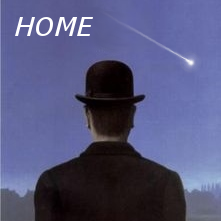




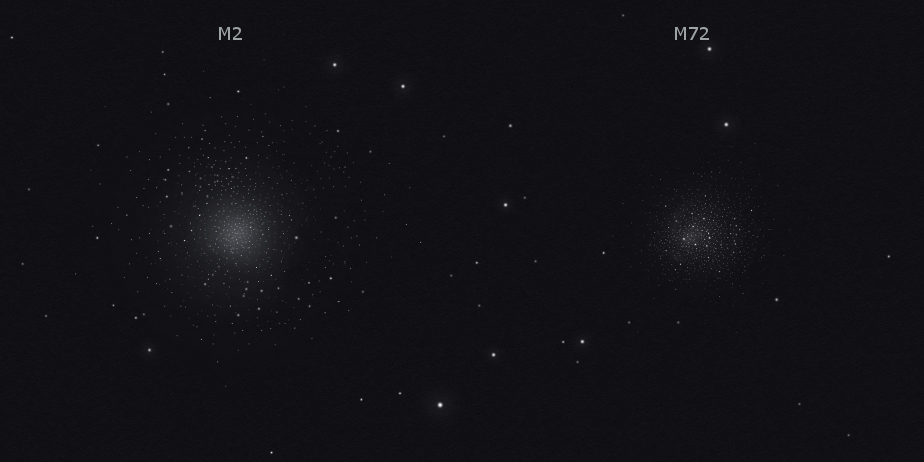
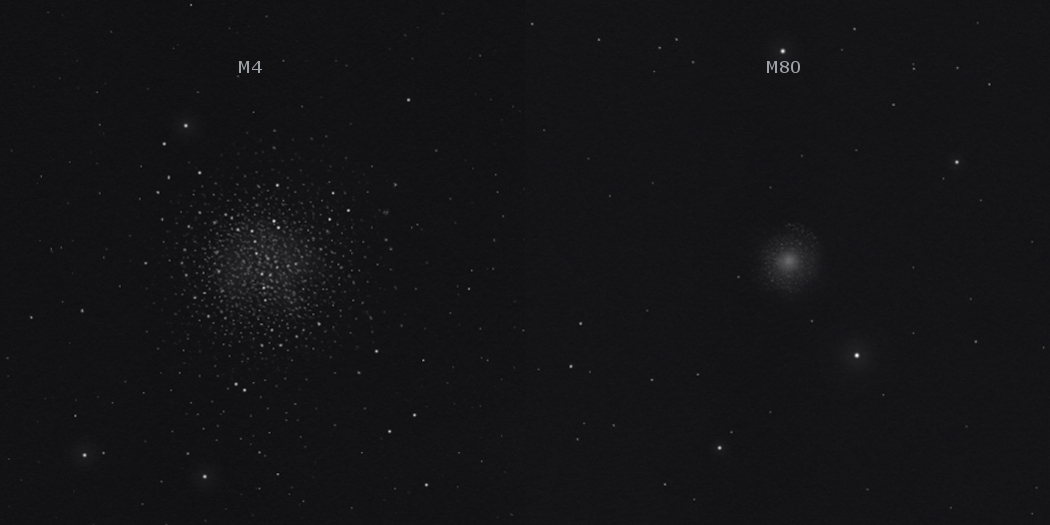
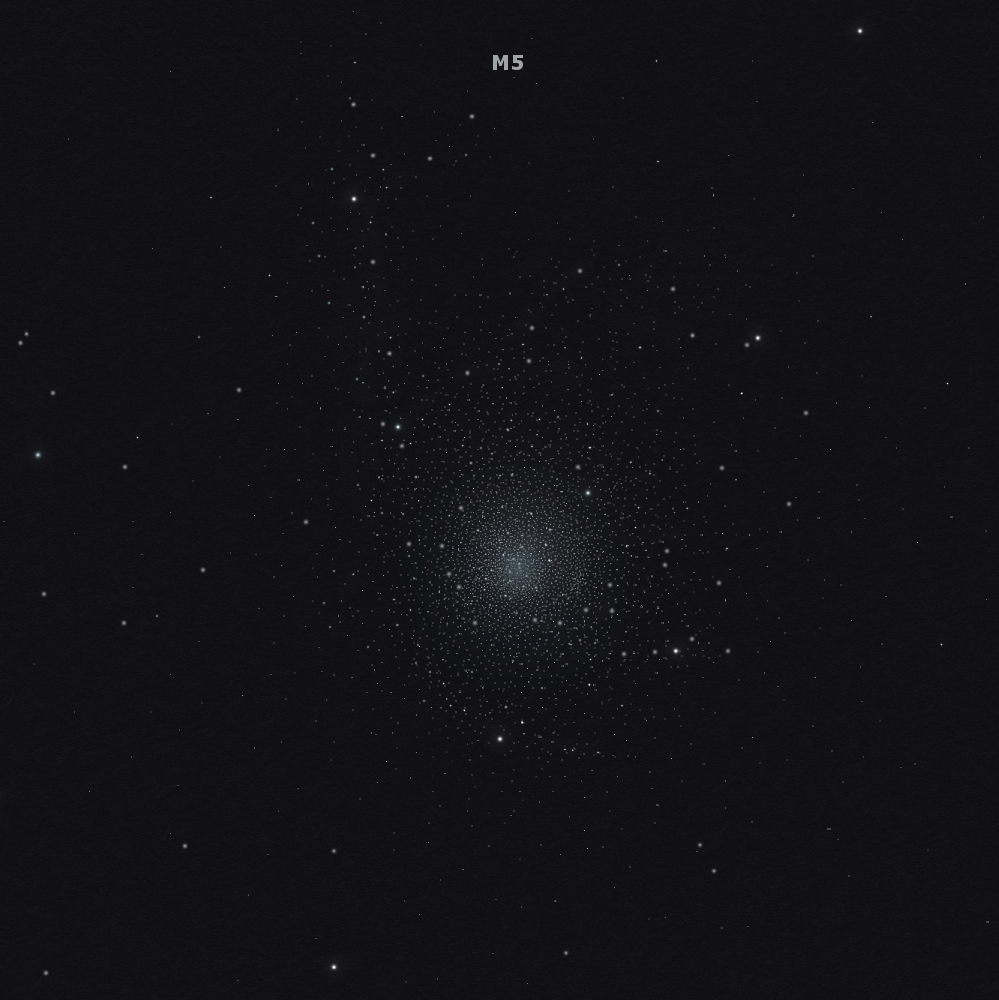
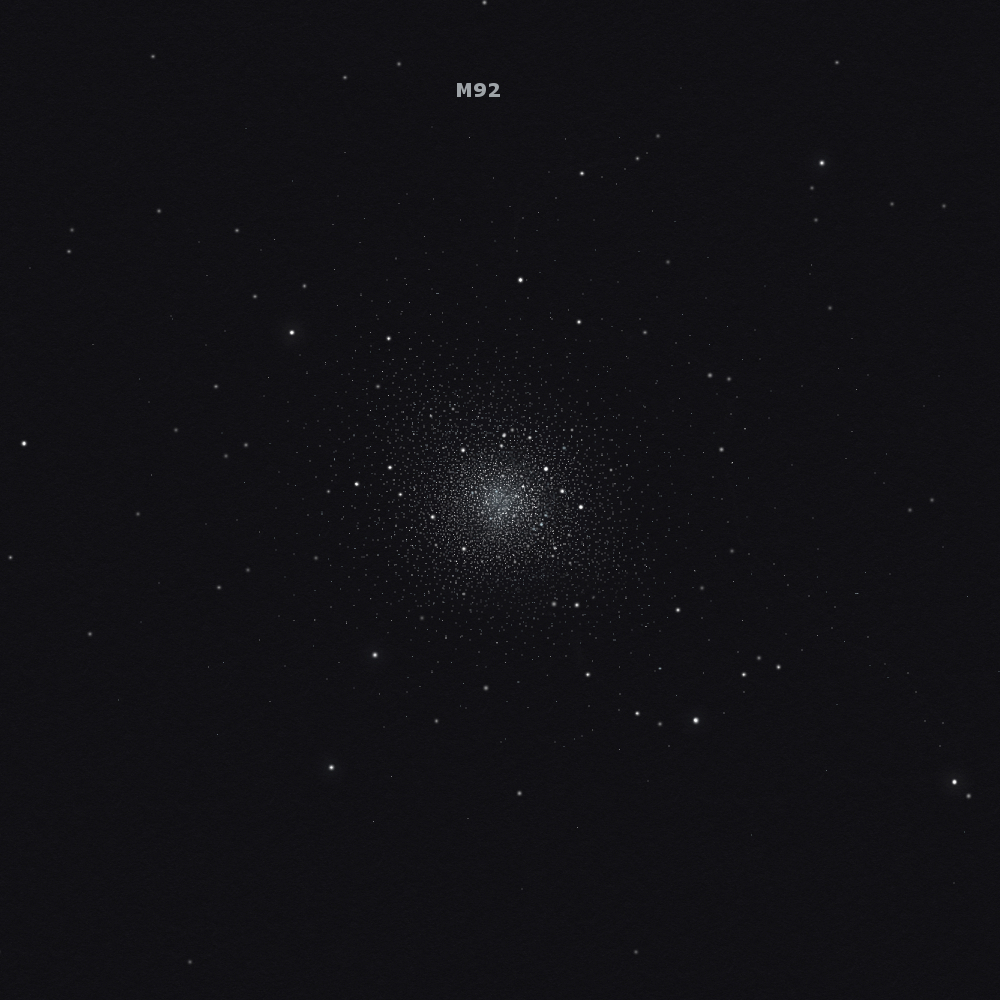
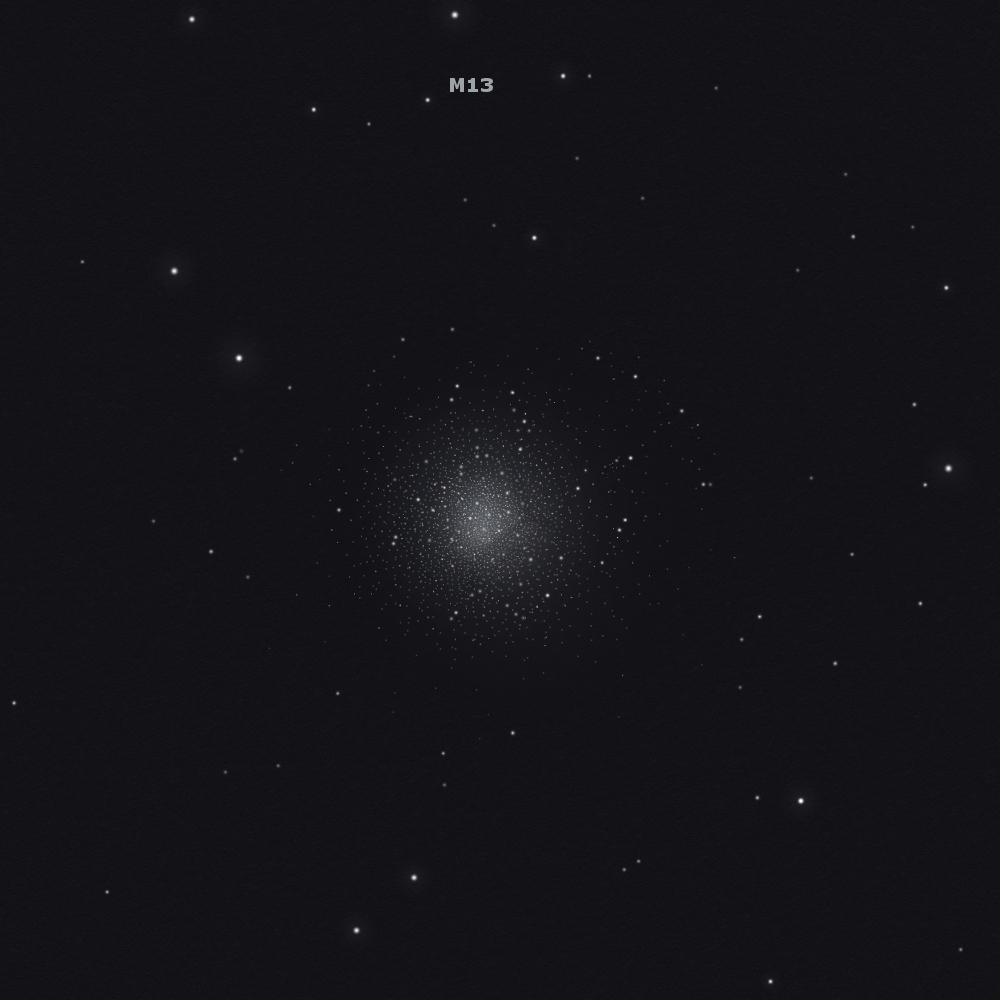
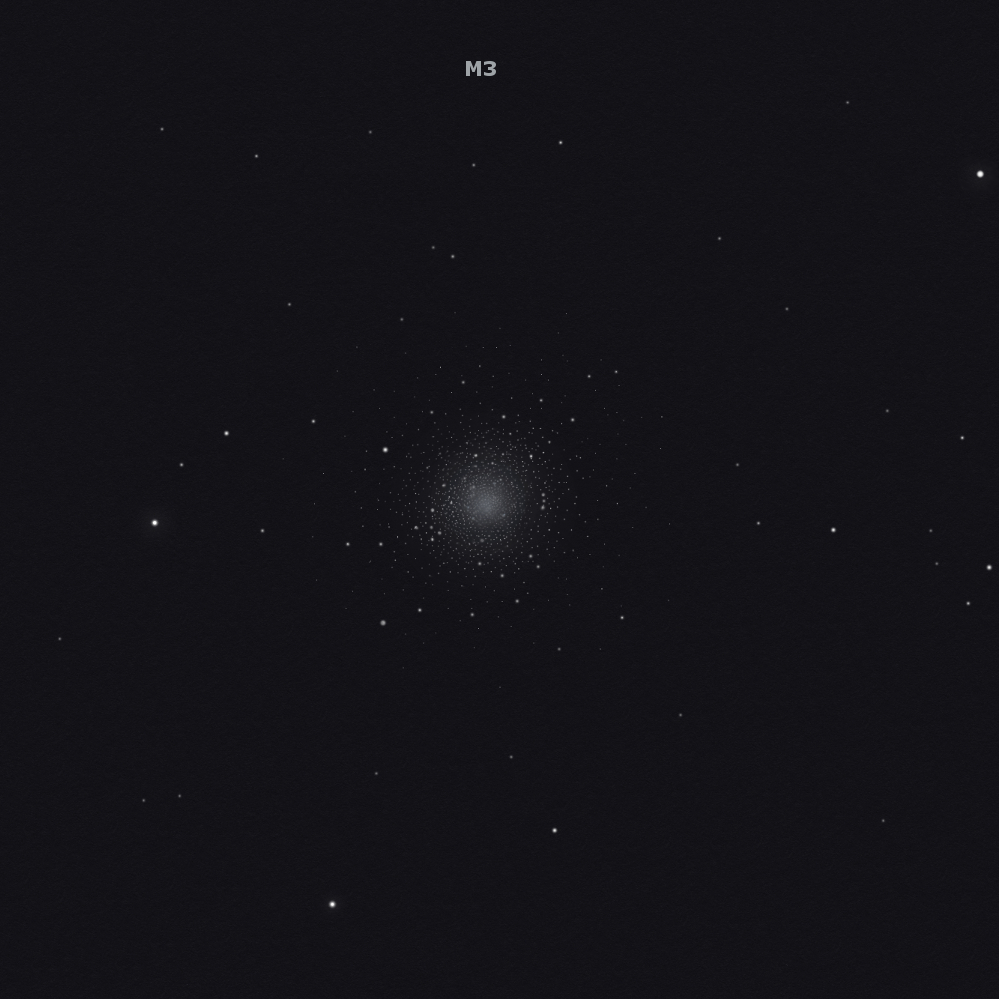
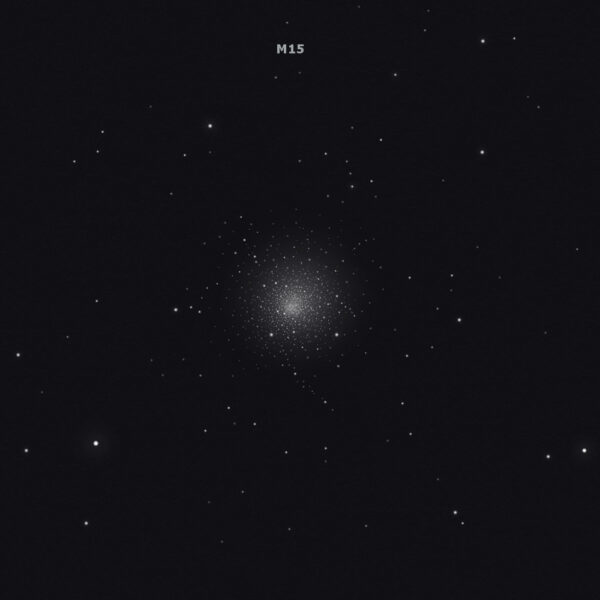
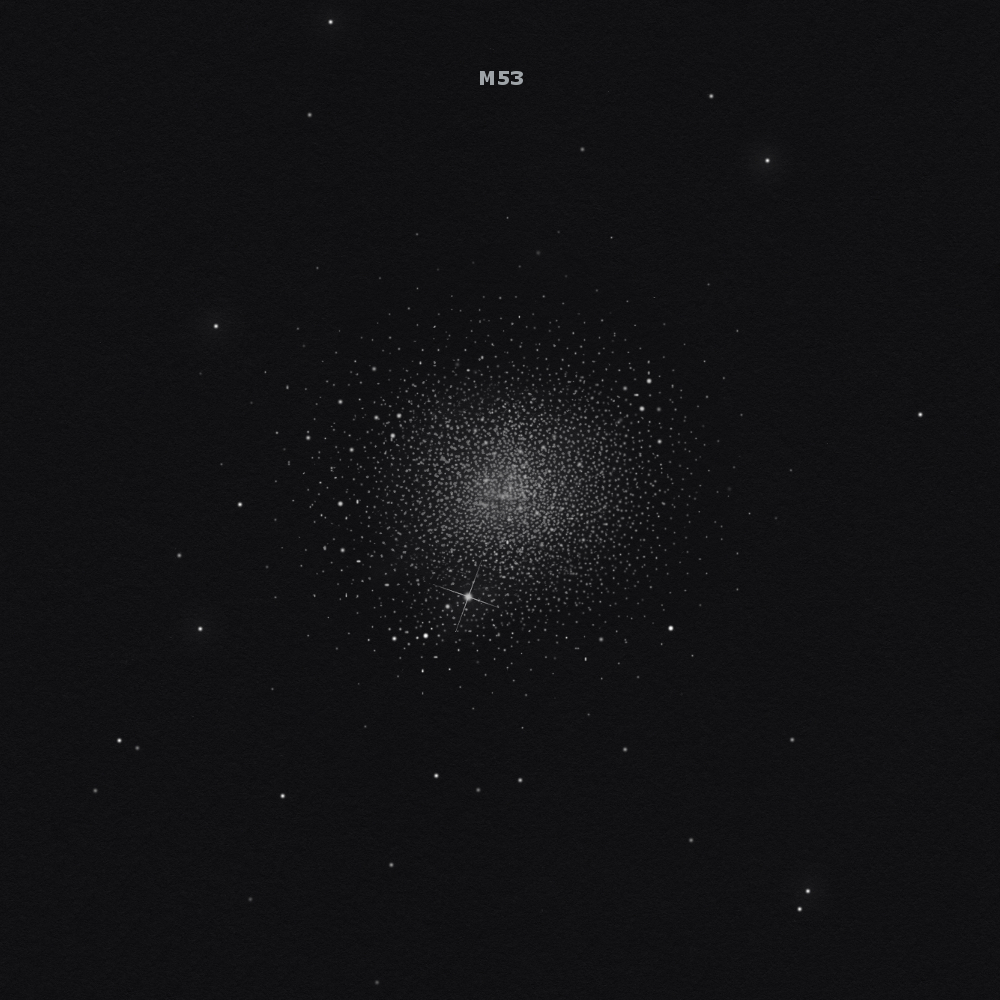


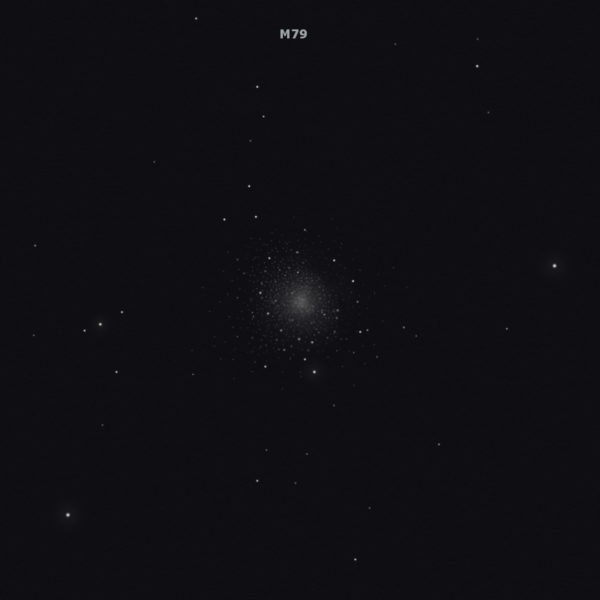
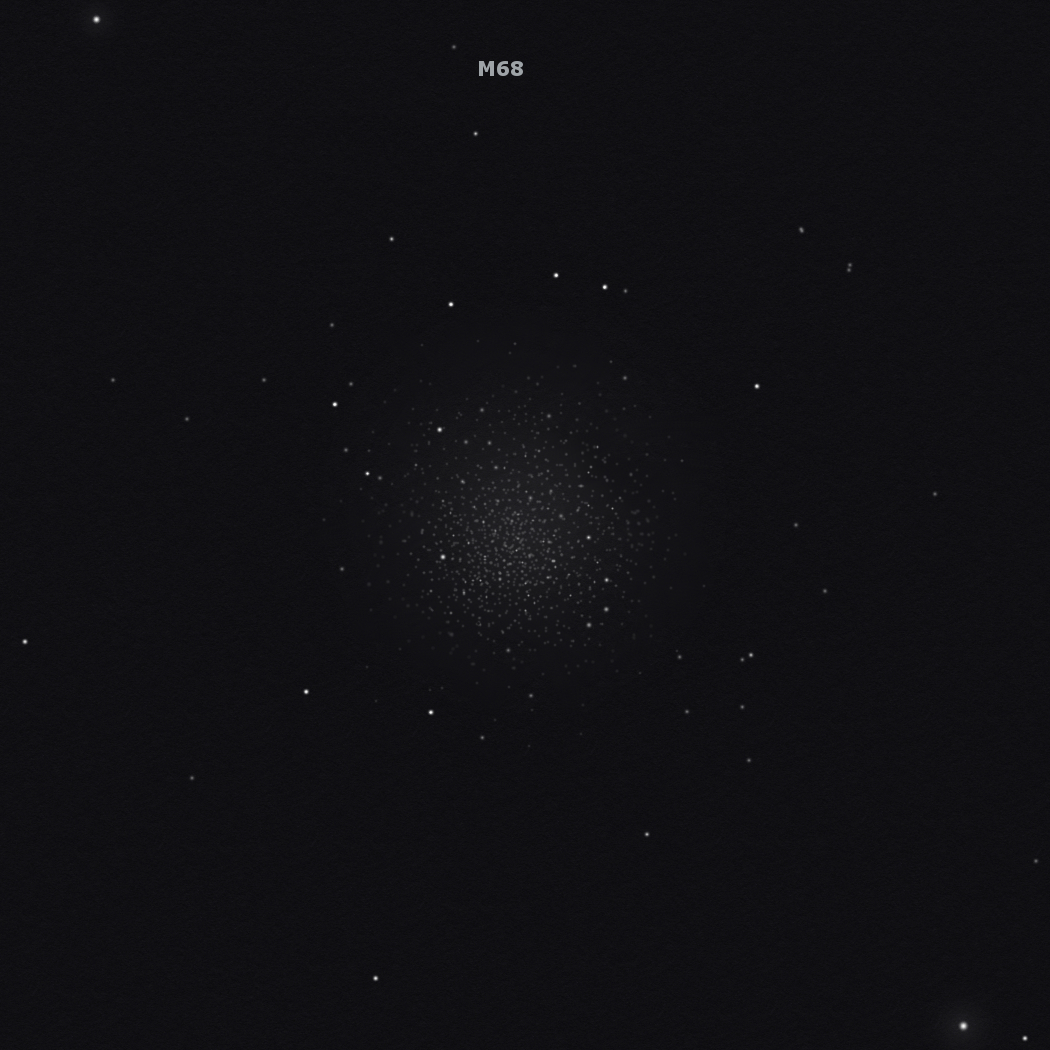
No Comments